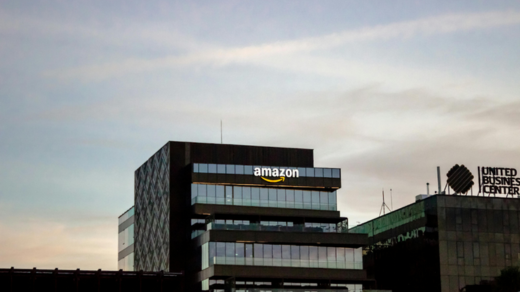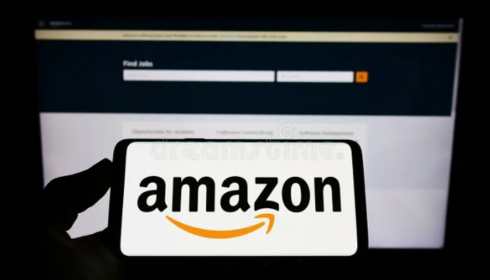
In today’s competitive e-commerce environment, premium brands face constant challenges in protecting their identity, pricing, and perceived value. The rise of third-party sellers, counterfeit products, and shifting consumer behaviors has made it increasingly difficult to maintain a luxury or premium positioning on marketplaces like Amazon. This is where Brand Services Amazon specialists play a crucial role. By combining marketplace expertise with brand protection strategies, they ensure premium products retain their exclusivity, trust, and long-term profitability.
1. Enforcing Brand Registry and Intellectual Property Protection
The first step in premium product protection is leveraging Amazon’s Brand Registry. Specialists ensure that every premium brand is properly enrolled, allowing access to tools that protect intellectual property, monitor listings, and remove counterfeit products. Enrolling in Brand Registry not only strengthens a brand’s control over its listings but also provides proactive monitoring against unauthorized use of logos, trademarks, and product images.
For example, a luxury skincare company facing counterfeits can rely on a Brand Services Amazon specialist to set up automated alerts for suspicious sellers. Once flagged, specialists use Amazon’s internal reporting systems to quickly remove fake listings, protecting both the brand’s reputation and consumer trust.
Execution involves:
- Registering trademarks with Amazon’s Brand Registry.
- Setting up automated keyword and image monitoring.
- Using transparency programs and serialization to validate authenticity.
2. Controlling Unauthorized Sellers and Gray Market Issues
Unauthorized resellers are one of the biggest threats to premium positioning. They often undercut official pricing and damage the brand’s carefully cultivated reputation. Amazon specialists take proactive steps to identify and eliminate unauthorized sellers through reseller agreements, cease-and-desist notices, and working directly with Amazon’s enforcement teams.
For instance, a premium electronics brand may discover unauthorized sellers offering their products at steep discounts, eroding perceived value. Specialists track these sellers using advanced monitoring software, verify the authenticity of their inventory, and enforce removal if they fail to comply with brand policies.
To execute this effectively:
- Set up automated tracking for seller IDs and listing activity.
- Develop legal frameworks and reseller policies.
- Use MAP (Minimum Advertised Price) monitoring tools to ensure price consistency.
3. Optimizing Premium Content and Storytelling
Beyond protection, premium positioning requires premium storytelling. Specialists ensure product listings reflect a luxury experience by optimizing titles, images, A+ content, and brand stores. High-quality visuals, detailed product descriptions, and emotional storytelling reinforce the product’s exclusivity and justify higher prices.
Take the example of a high-end watch brand. Instead of a generic product page, specialists design immersive A+ content with lifestyle imagery, heritage storytelling, and comparison charts showing why the watch stands apart. This transforms the Amazon listing from a transactional page into a brand showcase.
Execution steps:
- Invest in professional photography and 360° product views.
- Create A+ content highlighting craftsmanship and brand heritage.
- Build an Amazon Brand Store replicating a premium shopping environment.
4. Implementing Pricing Discipline and MAP Enforcement
Maintaining premium positioning requires strict pricing control. Amazon is notorious for price wars, but premium products cannot afford to compete solely on discounts. Specialists implement MAP enforcement strategies to ensure consistency across all sales channels.
For example, a luxury fashion label may face unauthorized sellers slashing prices during peak seasons. Specialists use repricing tools to track violations and issue enforcement notices. They also ensure official brand listings never engage in unnecessary price drops that could dilute the brand’s exclusivity.
Steps to execute:
- Monitor prices daily with specialized MAP software.
- Issue violation reports and enforce penalties.
- Educate authorized resellers about pricing policies.
5. Leveraging Customer Reviews and Reputation Management
Premium positioning depends heavily on trust, and customer reviews shape that perception. According to Thrive Internet Marketing Agency, a leading Amazon storefront services company, specialists monitor reviews, respond professionally to negative feedback, and ensure fake or malicious reviews are reported and removed. This ensures the product maintains a strong reputation aligned with its premium image.
For instance, if a luxury supplement brand receives fake one-star reviews intended to sabotage its reputation, Amazon specialists intervene by reporting fraudulent activity while encouraging verified buyers to share authentic experiences.
Execution steps include:
- Using review monitoring tools for sentiment analysis.
- Responding promptly and empathetically to negative feedback.
- Creating post-purchase follow-ups to encourage authentic reviews.
6. Protecting Supply Chain Integrity
Another way to safeguard premium positioning is through supply chain control. Specialists work with brands to implement transparency programs, serialization, and inventory monitoring that prevent counterfeit infiltration. This guarantees customers always receive authentic products, reinforcing trust.
For example, a luxury cosmetics company may introduce QR code verification on Amazon listings, where buyers can scan packaging to confirm authenticity. Specialists manage the rollout and ensure customers are educated about the process.
Execution strategy:
- Apply Amazon’s Transparency Program with product-level serialization.
- Regularly audit supply chain and distribution partners.
- Educate consumers on authentication features.
7. Data-Driven Brand Performance and Competitive Monitoring
Protecting premium positioning is not just about defense—it also requires proactive market intelligence. Specialists use data analytics to track competitor movements, pricing shifts, keyword trends, and consumer sentiment. This ensures brands stay ahead of emerging threats.
For example, a premium coffee brand might face competition from cheaper alternatives. Specialists analyze keyword trends to optimize listings for “gourmet” and “artisanal” positioning while reinforcing premium value through targeted ads.
Execution involves:
- Running regular competitive audits.
- Adjusting keyword strategies to emphasize exclusivity.
- Leveraging Amazon Advertising to target high-value audiences.
8. Long-Term Brand Strategy on Amazon
Ultimately, protecting premium positioning is not a one-time effort—it’s a long-term strategy. Brand Services Amazon specialists work with brands to create roadmaps that include seasonal campaigns, product launches, customer retention, and ongoing enforcement of brand integrity.
For example, a luxury skincare brand may plan yearly product launches around seasonal trends, supported by ad campaigns and content updates that reinforce exclusivity. Specialists guide every step, ensuring alignment with both Amazon’s ecosystem and the brand’s core identity.
Execution steps:
- Develop annual brand calendars with launches and campaigns.
- Update A+ content and brand stores seasonally.
- Maintain ongoing monitoring for unauthorized sellers and counterfeit risks.
Conclusion
Premium brands cannot afford to let Amazon’s open marketplace erode their value. By leveraging strategies such as brand registry enforcement, unauthorized seller control, premium content optimization, MAP enforcement, and customer reputation management, specialists ensure that exclusivity and trust remain intact. In 2025, the role of Brand Services Amazon experts has become essential—not only for protecting against threats but also for reinforcing the long-term growth and prestige of premium products.








